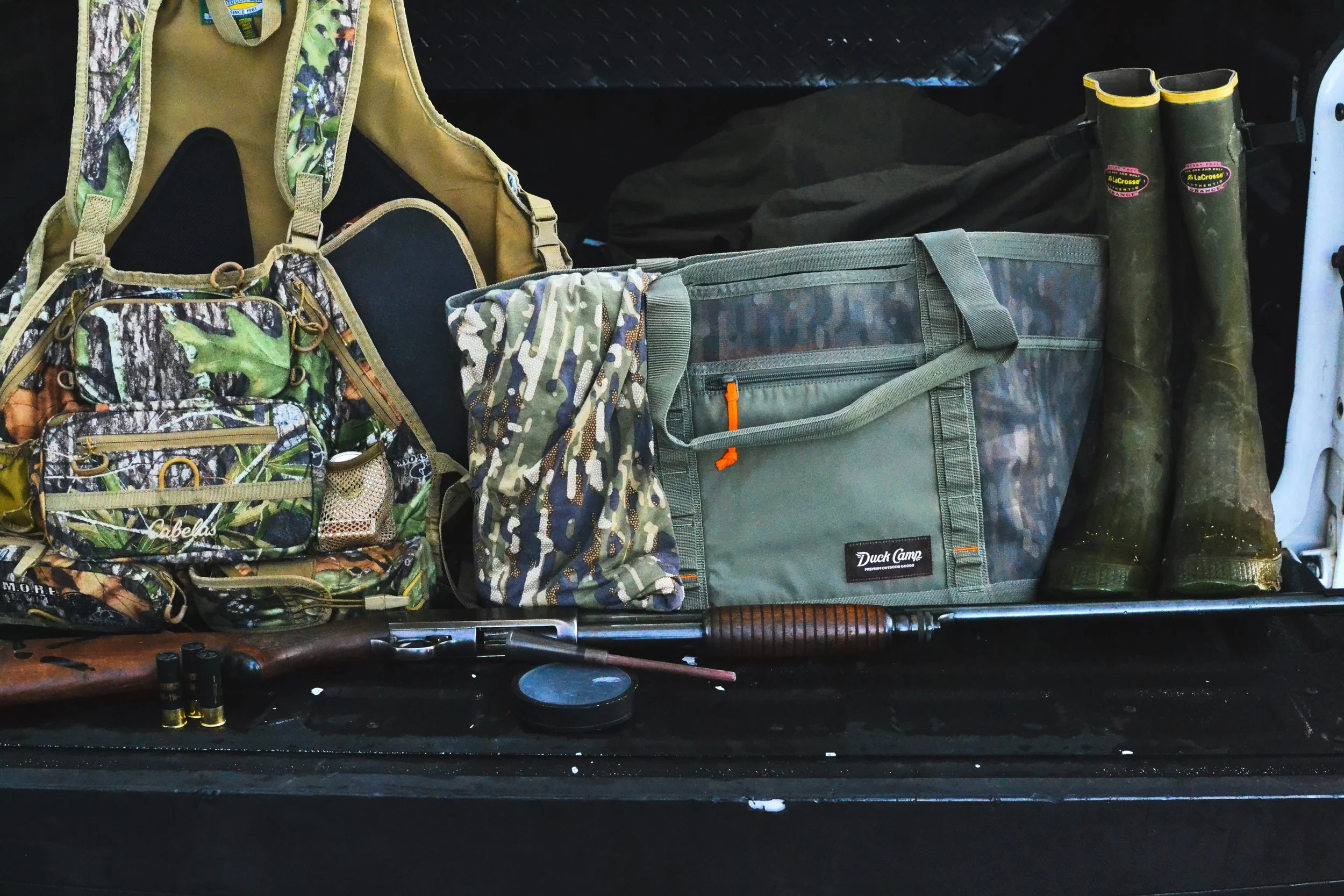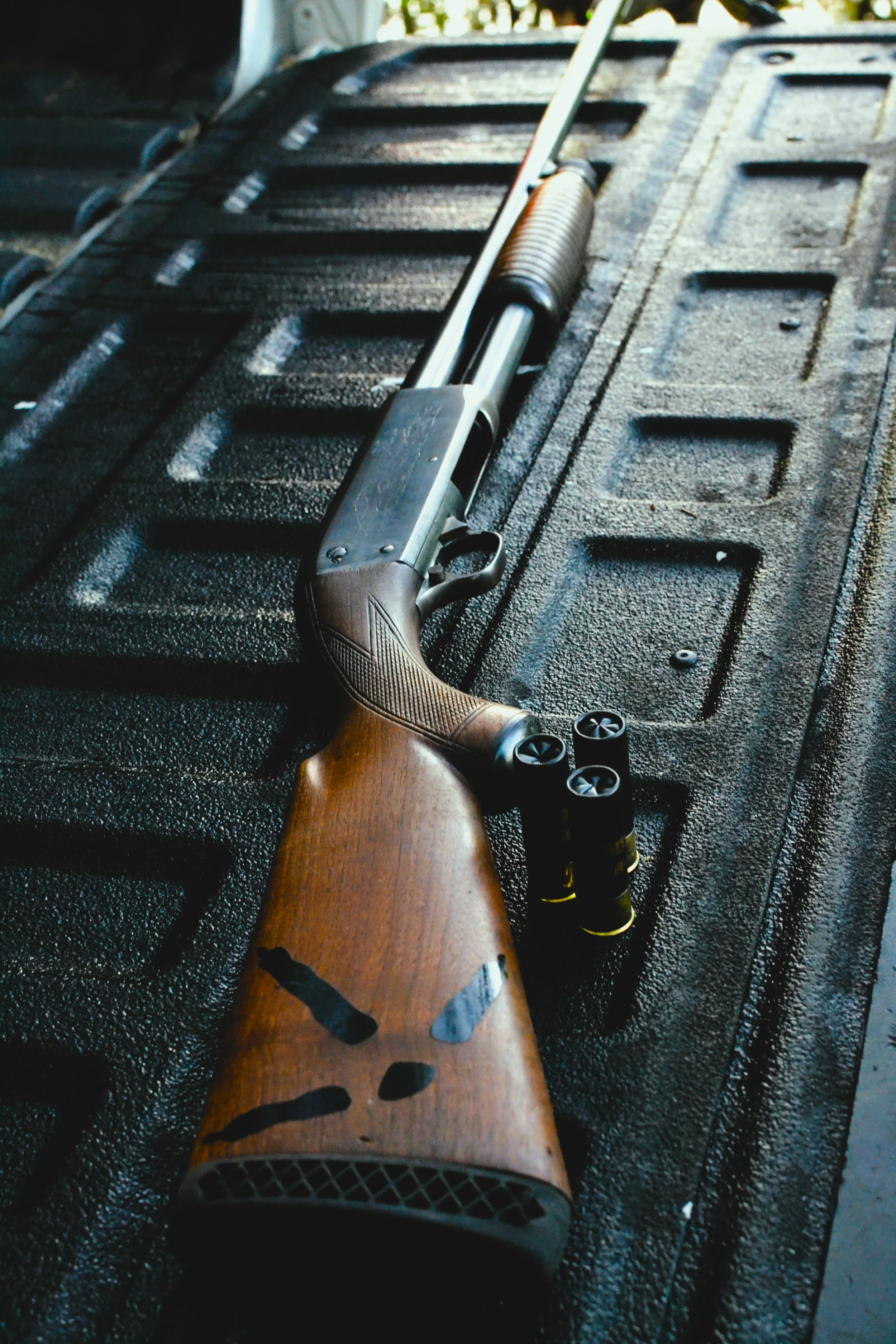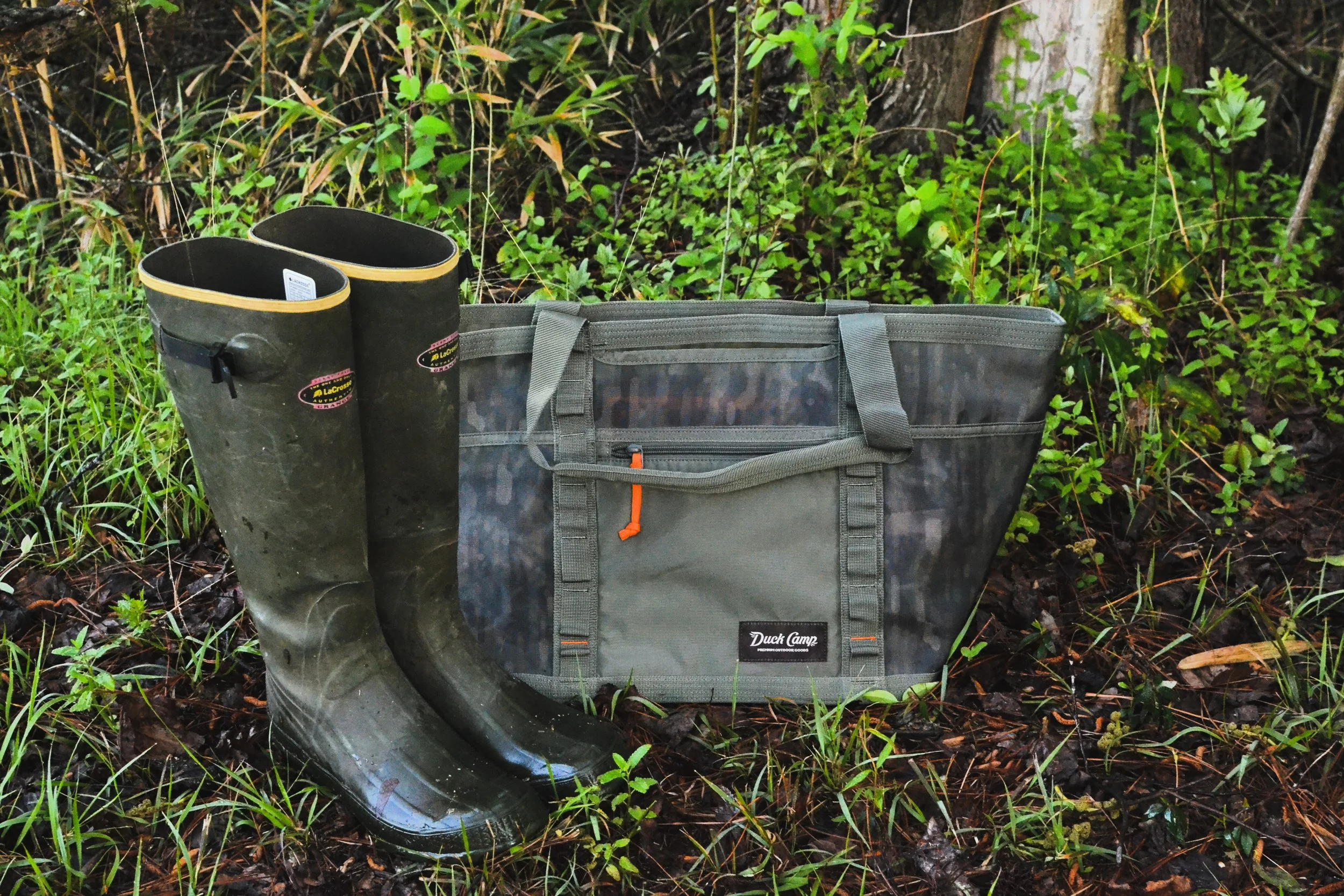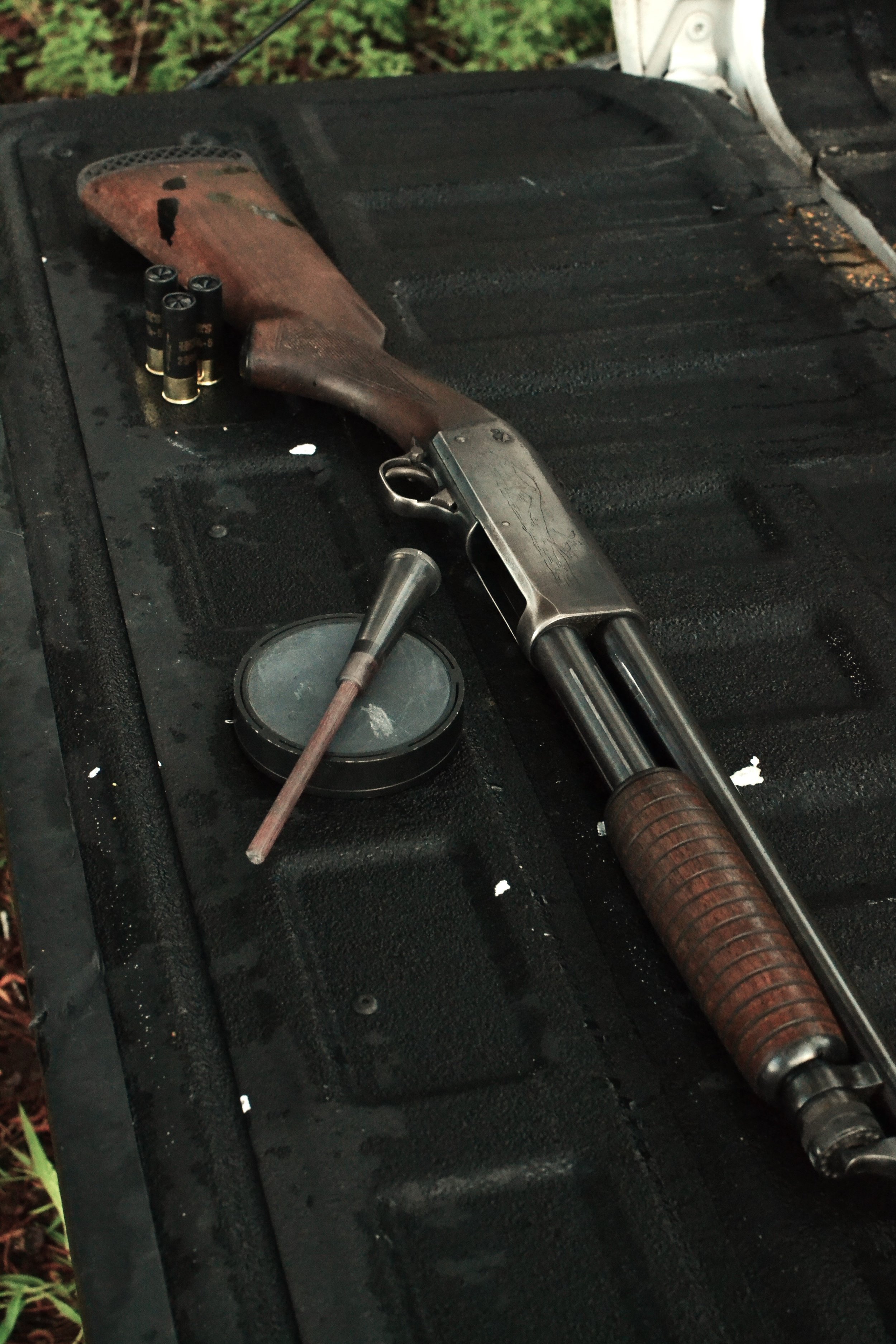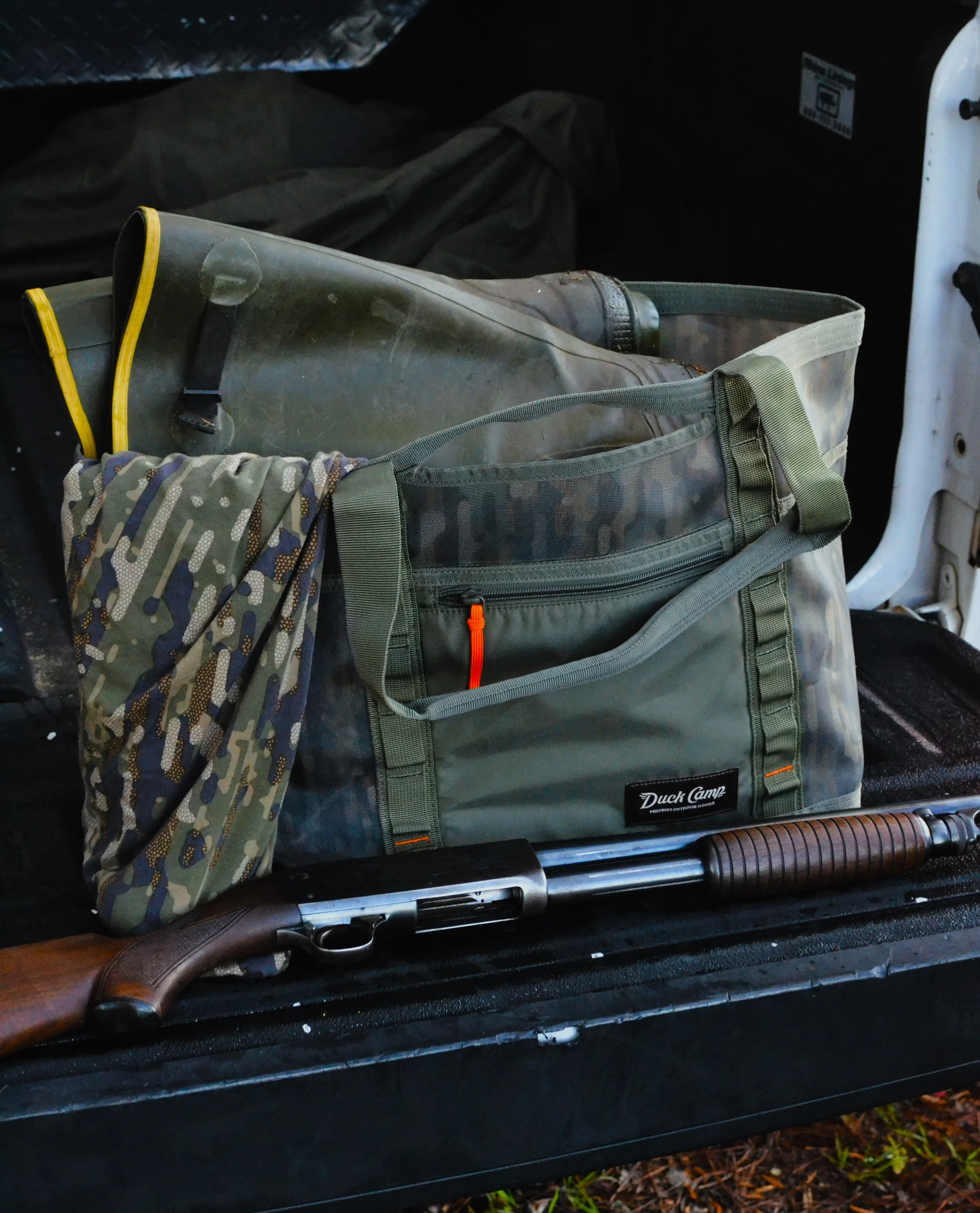Getting Started Turkey Hunting
Five Things You Need
Tips & Tricks
Turkey gear loadout
Intro
Spring is my favorite season of the year. The days seemingly get longer, and daylight savings time allows us to spring forward in time. Sunny days are more prevalent, green up is starting to happen and pollen is in the air! This is the time of year when I dust off my turkey gear and begin annoying my neighborhood while practicing my calls in my garage. Turkey season opener is right around the corner!
Maybe you’ve taken an interest in turkey hunting and want to match wits with these amazing critters! But what do you need to get started? In the following paragraphs I will break down the Five Things You Need to get started turkey hunting. I will discuss firearms, footwear, apparel, calls and ways to carry your gear. All of these tips and tricks should aid in you getting outfitted for your next adventure, and hopefully result in success in the woods this spring.
Shotgun
Shotguns specifically designed for turkey hunting have changed a lot over the past ten years. When I began turkey hunting I used my 20 gauge semiautomatic. This was my all purpose bird gun, I hunted quail, ducks and doves with this gun. When the seasons changed, I just swapped out my choke tubes. I purchased a super full choke for turkey season, and it worked fine. This is definitely the easiest way to get into turkey hunting. No need to purchase a new firearm, just use the one you have and use a full or super full choke.
16 Gauge Ithaca Featherlight Model 37
However, if you want to purchase a new firearm for turkey hunting there are two trains of thought. Similar to how bow hunters fall into the two different camps of light arrows-fast bows or heavy arrows-less fast bows, a turkey hunter can go ultra light or big & heavy! The ultralight option is opting into a smaller gauge shotgun, like the very popular single shot .410. These guns are super specialized! They feature a shorter barrel, lighter material makeup, and oftentimes are wrapped in a spring camouflage pattern. In theory you could use this ultralight style shotgun for small game hunting, but it is mostly limited to just turkey hunting.
The second option, i.e. the big & heavy, is to purchase a larger caliber shotgun, like a 12 gauge. This approach would be best suited for hunters that pursue turkeys and other game like deer, doves and ducks. I upgraded from my childhood 20 gauge to a 12 gauge Remington 870 with a 28 inch barrel. This gun is heavy and packs a punch, but it will stop a turkey in its tracks without a doubt! To be more mobile, some manufactures have 12 gauge models with shorter barrels, but I think the longer barrels help balance the gun best. Ultimately the choice comes down to preference, and choke tubes paired correctly with the right shell, you can pattern any gun to meet your needs this spring.
Boots
Obviously a firearm is important, and is needed to pursue and bag a turkey, but footwear can make or break a day in the spring woods! Turkey season can be quite volatile in my home region of the southeast. Our season may begin with mornings in the upper 30’s but by the end of April, temperatures can crest the 90’s. Not to mention turkey season falls during the wet season, and wetland habitats can flood overnight. I heard it said once that if you don’t have green boots, you ain’t no turkey hunter! It’s hard to argue with that, as a common identifier of seasoned turkey hunters is a pair of LaCrosse 18-inch Grange rubber boots. These boots are perfect for the spring weather: light enough to run and gun, tall enough to traverse swamps, creeks and rivers, and best of all spring green to blend in with the season's foliage. My two complaints about these boots are they are not breathable and if Mr. No Shoulders strikes, these boots will provide no protection. Being such I am trying out a new pair of boots this season, the Wetland Pro Certified Snake Strike Boots from Muck Boot Co. These are waterproof, breathable and best of all snake proof. I hunted in these boots this fall and winter, and I do like the way they feel. They are not as lightweight as my LaCrosse boots, but I will have to see if the pros outway the cons this season.
To be brief, turkey hunting is a sport of mobility. The boots you select should allow for ease of walking, sitting, kneeling and at times even belly-crawling. Boots to a turkey hunter are like running shoes to a triathlete, you’re only as good as your gear.
LaCrosse Grange Rubber Boots & Duck Camp Mesh Gear Tote
Camouflage Apparel
Can you have a successful turkey hunt in blue jeans? Absolutely! As long as you are hidden into thick cover. One of the best challenges of hunting turkeys is the bird's incredible eyesight. A turkey can pick up your silhouette from a long way off. One of my hunting mentors told me when I first started pursuing turkeys that it's not a matter of if a turkey sees you when they are closing the distance, it's a matter of if they perceive you as a threat. One big disclaimer about your apparel, it doesn't matter how realistic your pattern is, because if you are not still a turkey will see that and spook. However, the right apparel can help mask certain key movements during a turkey hunt.
The camouflage apparel worn during turkey season should match the environment that you are hunting. Not to say your favorite fall deer or winter duck pattern won’t work, but integrating the brighter green colors of spring or wearing leafy/ghillie type gear can add realism to your stationary position. I make it a habit to hide within cover when pursuing a bird, and I try to match my camo to my surroundings. I also want my gear to be lightweight, breathable and bug resistant. I spray my gear before the beginning of the season with Permethrin Fabric Treatment from Sawyer. This keeps the ticks and mosquitoes away. I also spray up with DEET bug spray and use a Thermacell. I never hunt without a facemask and gloves. This helps with the bugs, but is so important to conceal my movements. Your hands and face contrast strongly against the backdrop of the spring woods. I like to wear clothing with a hood because it breaks up my silhouette from the back. Ultimately find camouflage apparel that is comfortable, light, breathable and matches your habitat.
Pot Call
My favorite aspect of turkey hunting is the call and response. As turkey hunters, we are able to communicate with the birds in an attempt to immerse ourselves into the cadence of nature. But getting started turkey calling can be challenging for a beginner. The options and opinions are endless, but the most forgiving call for a new hunter is a pot or friction call. The learning curve on these style calls is very low when compared to that of a mouth call. Box calls are great and very popular, but they can squeak if you move around with one in your pocket or on your hip. Pot calls range in prices, but you can get a good call and striker for under $25. These calls can be used to make loud, sharp, staccato yelps and cuts with ease, but can be softened down for quiet purrs and clucks to help lure in a hung up gobbler. Pot calls are usually broken up into two material groups: slate or glass. I love a slate call for making soft notes like purrs and clucks to bring a bird in close. The only downfall to slate calls is that if they get wet, the call will not deliver clear notes. Slate calls also struggle to deliver clear, loud notes on windy days. Glass calls on the other hand have no aversions to rain or windy days. Glass calls do require the call to be scratched or scuffed in the striking area of the call, whereas slates need to be totally smooth.
H.S. Strut Slate Call & Turkey Shotgun
Once you select a call that you like and get a few different strikers, the next step is to practice, practice, practice. A common misconception is that you need to be a good caller and a realistic caller to entice a Tom turkey to commit. I have heard hens in the woods calling that sound like the worst caller in the world.
Calling needs to be intentional and appropriate for the situation. Once you strike up a bird and it responds to your calling, stop calling. Turkeys have excellent hearing and can triangulate your location once they hear your call. If you continue to call to a turkey that has responded, most of the time you will make a mistake and the bird will elude you. It is so tough in the moment to sit still and be patient, but turkey hunting is a game of odds. Lessen your odds of making a mistake and wait for the gobbler to slip up. There are really only two ways a turkey hunt can go: the hunter fools the turkey, or the turkey fools the hunter. There is nothing more frustrating than the latter.
Vest or Pack
Turkey hunters are notorious for having a lot of gear, and most of it is justified. Shells, calls, facemask, gloves, Thermacell, bug spray, pocket knife, headlight, toilet paper and a light snack are the required “loot” of a turkey hunter. So the struggle comes from how to carry all this gear in a way that pairs comfort with function. Turkey vests are much more than an apparel item. Each pocket, pouch and zipper it thought through with intentionality. Most vests have an integrated butt pad that can flip down from your back to provide comfort while sitting in the woods up against a tree. Ultimately the vest or pack that a hunter chooses comes down to the way you want to hunt. If you are hunting public land and want to cover some ground quickly, you may opt into a sling pack or fanny pack to pair with your blaze orange vest. If you hunt with decoys, you may select a vest that has a large game pouch in the back to store the decoys. I have both a vest and a pack. When hunting our family farm, especially in early season when the weather is still cool, I utilize my vest. I may spend most of my day in the early season out in the woods, and I can carry everything I need for the day in my vest. It has an integrated butt cushion, and an internal framed back brace so I can sit against a tree for hours in comfort. When I hunt public land or if it's late season and I am running and gunning, I use a sling pack. It has three different integrated zippered pockets to keep my calls and gear organized, and I use my blaze orange vest and a cushion from my deer stand. When selecting your pack or vest for this spring, keep in mind function and comfort. Again, you are only as good as your gear, or in this case as good as your gear allows you to be!
As mentioned earlier, I live in the southeast, and turkey hunting is the closest thing we southerners get to western big game hunting. The pursuit of big gobbling Tom’s incorporates early season scouting, call & response, spot & stalk, and run & gun. I leave the bass fishing for the month of May, because late-March through April my mind is totally obsessed with the spring woods! I hope these tips and tricks help you get a leg up on some gobblers this spring, and ultimately help you enjoy your time out in the woods and amongst God’s creation.
______________________________________________________________________
If you have any questions about spring turkey hunting or gear to get started, feel free to reach out to me through the “Contact Us” dialog box on my home page or find me on Instagram at @hwy22outdoors
………………….Find Your Next Adventure


